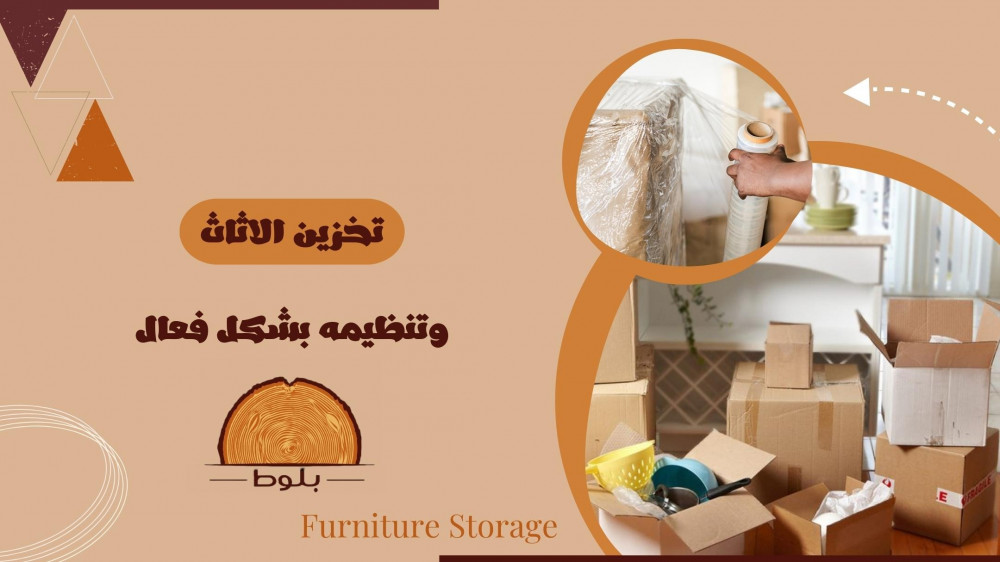What is the concept of furniture storage?
It is the process of storing furniture and decorations in a temporary location, whether outside or inside the home. This ensures that the furniture is kept in good condition for as long as possible, while allowing for the flexibility of retrieving stored items.
What is the purpose of furniture storage?
The primary purpose of storing furniture may vary beyond the desire to maintain its quality, whether for travel or moving to a new location. The comprehensive answer to the purpose of storing and organizing furniture remains:
- Moving to another location for a period of time or changing residence can leave the homeowner wondering what to do with the furniture, fearing that it will be exposed to insects that will damage and eat the wood. Of course, proper storage provides long-term protection.
- Providing security and developing targeted solutions to protect against theft due to the occupants abandoning the home.
- Protecting furniture and decor from dust accumulation and the dust that penetrates deep into the wood, which may be difficult to remove later, or from rusting the iron.
- Organize and downsize.
The harms of not storing furniture properly
The climate in Saudi Arabia is known for its extreme temperatures throughout the country for most of the year. In addition, the country experiences heavy rains in the winter, which can damage and distort furniture due to high humidity levels, which encourages fungal growth and mold in wood and fabrics.
4 Tips to Follow When Storing Furniture
1- Furniture cleaning
Fine dust and dirt should be cleaned from between the creases of wooden furniture such as tables, chairs, or storage units with a soft cloth or wood cleaning and stain removal solution.
In addition to thoroughly cleaning furniture and mattresses from food residues that stain them, which attract pests and promote mold growth, it's also a good idea to use a wood polish as a final step to ensure the pieces retain their shine and color throughout their storage. Ensure all pieces are completely dry before storing.
2- Furniture disassembly
Good ventilation allows air to circulate between the pores of furniture and wooden decor, so you should disassemble large pieces as much as possible, for example:
Remove drawers from closets and storage units, and separate headboards, mattresses, and bedposts, making sure to store the attached screws and nuts in a small bag in the same place where the disassembled pieces are stored.
3- Furniture covering
After completing the disassembly phase, you must move on to a fundamental step: avoid storing furniture uncovered without covering it. Some people may resort to using plastic bags, but this is not a good idea if you are traveling for more than a year, as the plastic traps moisture and condenses it, which leads to the appearance of mold and fungi in the long run.
Therefore, we at Oak Store recommend wrapping wooden furniture using old covers and soft cloth, ensuring it is tightly sealed to protect it from dust and moisture. Alternatively, arrange it in boxes of different sizes and then tightly wrap them in plastic bags.
Metal furniture is wrapped first with wrapping paper and then with cloth covers.
4- Furniture organization
Now it's time to organize your furniture storage and organization stages effectively. You have to assemble it correctly:
First: Gather them in the middle of the room spaces.
Second: Arrange the heavier furniture pieces at the bottom and the lighter ones at the top next to the decorative pieces.
Third: It is preferable not to place sharp or heavy objects on upholstered furniture or mattresses, so that the taut shape does not change over time and lose its luster.
However, there is another solution that saves time and effort: self-storage systems have recently emerged that offer temperature control, on-site cleanliness, and constant security. You can keep your furniture in its original condition without worrying about climate fluctuations and dust buildup.
Now it's easy to move around without fear of what will happen to your furniture, provided you follow the attached steps, starting with determining the duration of your trip. If it's short, there's no need to follow all those steps, while you can use covering fabrics. If it's long, the solution is available.

